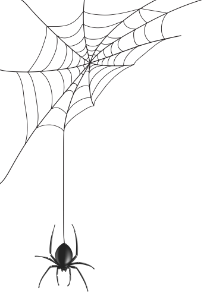Rodents in Southern AZ
We have quite a few important rodents to control around our homes, but almost all of our rodent work consists of 3 primary health and safety offenders: Mice, Pack Rats, and Roof Rats.
Mice
Mice are the most common rodent invader our customers see. People often seek professional help when they first see signs of droppings or hear something skittering around the kitchen due to increased health risks and potential damages. These damages range from chewing small holes in drywall, the edges of cabinets and doors, or chewing just the right wire in your appliance or wall to cause a number of additional headaches. Control is relatively basic, but steps can’t usually be skipped without more long term problems.
- Trapping. Mechanical trapping and physical removal of mice from a structure.
- Exclusion. Sealing current and potential entry holes into the structure.
- Sanitation. Cleaning up rodent droppings and trails, and keeping the general home and immediate exterior clean and tidy.
Pack Rats
Pack Rats cause some of the largest repair bills we see in the pest control world. If you live in an area that has high Pack Rat pressure, you’ve either had Pack Rat damage to a car or other exterior mechanical area, or you will. Given their nature to exist primarily outside (although they do nest indoors if given the opportunity), we need to not only remove them and close off entry points when they do get in, we need to trap them on your property whenever we find nests.
- Nest ID. Completing regular inspections on your property for Pack Rat nests is the only way to know your pressure.
- Trapping. Trapping right at the nest sites is key. There are different rules for trapping when you’re away from a structure, so please be mindful of doing any trapping any reasonable distance from your home without consulting an expert.
- Nest Removal. Once trapping at a nest is complete, the nest should be removed before a new Pack Rat moves in. Keeping a property well maintained is critical to controlling Pack Rat populations.
- Trapping Maintenance. There are occasions where trapping at nests isn’t possible, due to property lines, golf courses, or inaccessible areas.
- This is where mechanical trapping boxes come into play. Placed around critical areas like the garage or carport, pool pump area, AC condensers, outdoor grilling areas, and more, any Pack Rats that do come too close can be safely trapped and removed.
Roof Rats
Roof Rats are a newer issue to the area, and they’re spreading through Tucson and the surrounding areas a couple neighborhoods at a time. There have been quite a few news stories about them in the last two or three years, and there’s a lot of conflicting information about their control. Some outfits we still see regularly misidentifying Roof Rats as Mice or Pack Rats, which can be disastrous for customers and costly for Pest Control operators. If you suspect you have seen, heard, or been hearing about neighbors dealing with Roof Rats, call a professional immediately. Here are a couple things to expect:
- A ridiculously thorough inspection. Roof Rats earned that name by spending a huge amount of their time climbing. Palm trees, telephone poles, and rooves. An inspection will include laddering up onto the roof to check for signs of entry or droppings, as well as inspecting any attic or crawl space you have on the house. The entire perimeter of the home is checked (including outbuildings) and all entry points are identified. The interior is also thoroughly inspected, and your service professional will get a lot of information by conducting an interview with the residents of the home or employees of the business.
- Trapping. This is the one rodent we will always recommend hiring a professional to trap for. They’re crazy smart, and will actively avoid traps once they see what they are. There are many tactics to trick them into falling for clever traps, and if you want them out of the home in a reasonable time frame, even the pros need to pull out all the stops.
- Exclusion. Exclusion methods for Roof Rats usually entail more significant work than Mice or Pack Rats. Typically, all accessible holes are sealed, even the ones too small for a rat. These smaller gaps are often chewed open by Roof Rats to gain entry, and need to be fully sealed to prevent cornering.
- Sanitation. Removal of all accessible droppings and infested insulation is necessary to remove health risks from your home. These particulates dry out quickly, aerosolize, and can be easily breathed in by members of a household.
- Trapping Maintenance. Talk to a professional, neighborhood expert about Roof Rat pressure where you live to decide if installing a regular exterior trapping system should be considered.

